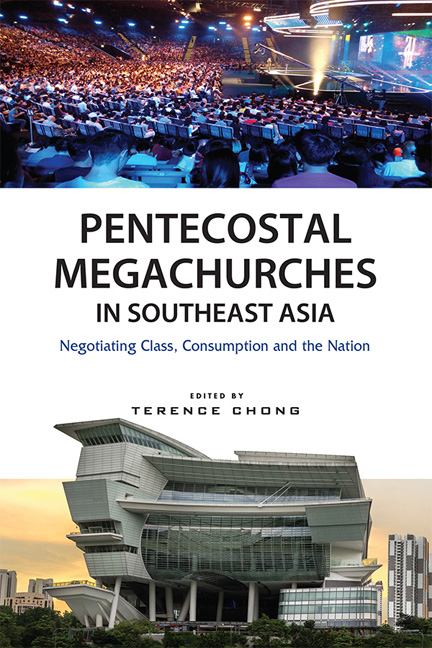7 - Pentecostal-Charismatic Megachurches in the Philippines
from Philippines
Published online by Cambridge University Press: 04 July 2018
Summary
Introduction
There are many misconceptions over Pentecostal megachurches in the Philippines. They are often perceived as advocates of the prosperity theology and thus motivated by financial gain while their charismatic leaders are viewed by the popular media as individuals with a messiah complex because of the strong leadership demonstrate over their congregations and prominent role they play in the society. This chapter explores the growth of Pentecostal megachurches in the Philippines and their innovative indigenization of the Christian faith as well as the influence of their Western counterparts. It begins with a review of the contemporary scholarship which has informed in the field and proceeds to identify the major Pentecostal megachurches which have been at the forefront of reinventing Christian witness in the Philippine society. It will offer two case studies of Pentecostal megachurches to examine their historical development, links to the poor and the middle class, networks, locations in the political landscape, doctrine of prosperity, and the form of their social and civic engagement. In doing so, this chapter seeks to answer the following questions: How have Pentecostal megachurches developed and what attracts the masses to attend them? What form of civic engagement do they play in indigenizing gospel messages in the Philippine society?
Survey of Scholarship of Megachurches
Studies by Grant McClung in the 1980s reveal that even before the emergence of the Church Growth Movement in the 1960s there had been academic observers who had noted that Pentecostal church growth was already a phenomenon. Later, Donald McGarvan and Peter Wagner, two leading Pentecostal academics, concluded from their investigations that Pentecostal megachurches were emerging because evangelism and mission were central to the ministry of Pentecostals.2 Donald Miller, who conducted qualitative research on three megachurches in the United States observed that megachurches were the “new paradigm” of the Christian movement which was connected to the spirituality of first century Christians. However, while attempting to bring Christianity to the twenty-first century masses, these Pentecostal megachurch-goers were disconnecting themselves from traditional forms of Christianity while providing a contemporary meaning to Christian witnessing in society.
- Type
- Chapter
- Information
- Pentecostal Megachurches in Southeast AsiaNegotiating Class, Consumption and the Nation, pp. 156 - 178Publisher: ISEAS–Yusof Ishak InstitutePrint publication year: 2018

